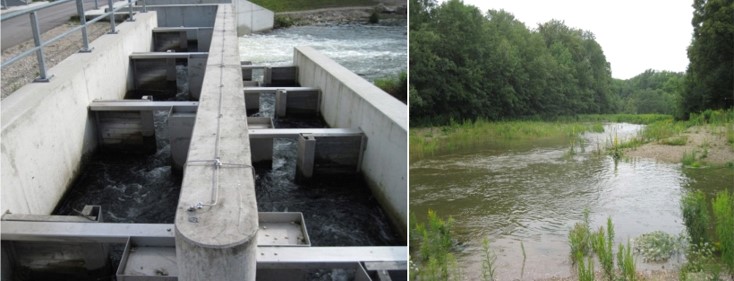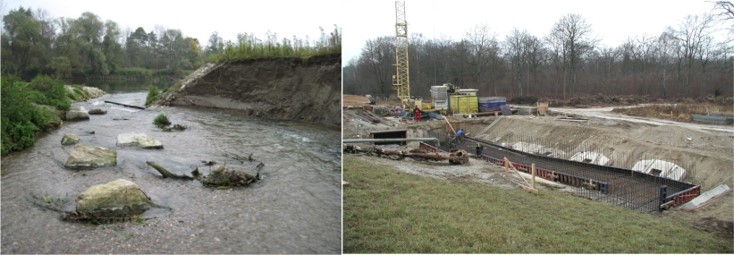Dynamization of the Danube floodplains between Neuburg and Ingolstadt


NBS info
| Country | Germany |
| River, water body | Danube |
| Stage | ME |
| Size | Big |
| Geotype | National |
| Innovative Solutions | No |
 |
 |
 |
Project summary
The Danube floodplain between Neuburg and Ingolstadt is with 2100 ha one of the largest remaining alluvial forests in Germany but has lost a lot of its natural dynamic in the 19th and 20th century due to river regulation measures. Thus, the project “Dynamisierung der Donauauen” aimed to improve river continuum and flood plain dynamics by implementing a package of different measures including but not limited to the construction of water outlets creating new habitats, improving longitudinal connection, and reconnecting the Danube to the adjacent alluvial forest.
Best practices and references
The project led to the founding of the “Auenzentrum” an initiative that serves research and knowledge exchange on the subject of floodplains of rivers and is dedicated to informing and engaging the public. A flyer containing detailed information on all activities is available in the German language.
Environmental, socio-cultural, economic impacts
The Danube floodplains have a wide range of different habitats and are of national importance for the protection of species and biotopes. They are important for the long-term conservation of many species. In addition, the project has a positive effect on flood prevention due to the amount of water diverted.
Replication and scalability
The activities were of course targeted specifically at the part of the Danube between Neuburg and Ingolstadt and can therefore not be directly replicated. However, the project can serve as a best-practice example for how to approach renaturation and how to monitor its success.
Participation process
As early as 1997 a feasibility study was carried out by the Rastatt Floodplain Institute of the Worldwide Fund of Nature (WWF). Based on this study a project groups including of experts from water management and nature conservation, representatives of the city of Ingolstadt and the district of Neuburg-Schrobenhausen, E.on Wasserkraft and the largest property owner, the Wittelsbach Compensation Fund was formed to lay the foundations for implementation of the project.
